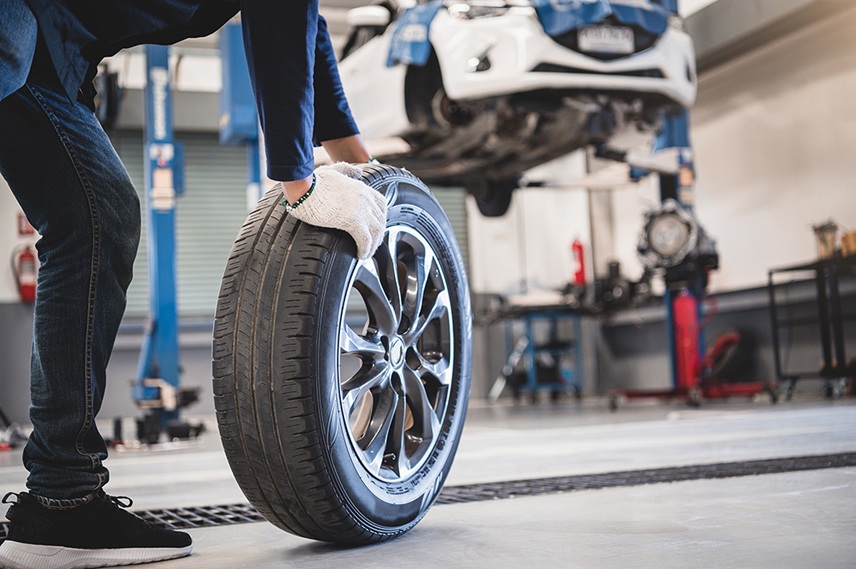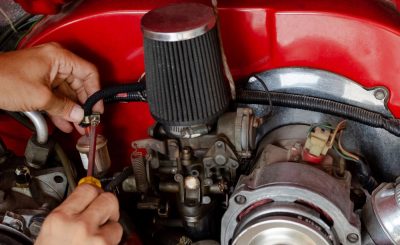The Reality Behind the Rubber
When you examine the lives of Singapore’s 524,000 private car owners, you discover that tyres represent far more than simple automotive components—they embody the complex relationship between individual mobility and collective urban planning in one of the world’s most regulated automotive markets.
Walk through any of Singapore’s established automotive districts—Paya Lebar, Woodlands, Jurong—and you’ll encounter a parallel economy that operates largely outside public consciousness. Here, mechanics with forty years of experience speak candidly about what they’ve witnessed: a transformation in how Singaporeans approach vehicle maintenance, driven by economic pressures that make every automotive decision consequential.
The Mathematics of Scarcity
With only 32% of residents owning vehicles, those who do possess cars face a unique economic calculation. The financial realities create several key pressures:
• Certificate of Entitlement costs – Often exceeding the vehicle’s value, making every component a significant investment
• Market growth constraints – Singapore’s tyre market valued at USD 0.09 billion in 2022, projected to grow at 4.72% annually through 2028
• Strategic purchasing decisions – The approximately 30,000 cars less than a year old recorded in 2023 represent calculated investments by families
The Human Cost of Climate
Singapore’s tropical climate creates conditions that challenge any automotive component, but tyres bear the brunt of this environmental assault. The constant heat—often exceeding 35°C—combined with extreme humidity, accelerates rubber degradation at rates that would surprise drivers in temperate climates.
The innovation response has been remarkable:
• Specialised tropical compounds – Rubber formulations designed specifically for consistent high-temperature performance
• Advanced tread patterns – Engineered to channel sudden, torrential water volumes characteristic of tropical storms
• Enhanced sidewall construction – Reinforced to withstand extreme temperature and humidity fluctuations
The Service Revolution
What emerges from conversations with workshop owners across Singapore’s automotive districts is recognition that traditional automotive retail models prove inadequate for Singapore’s unique conditions. The industry has responded with several innovations:
• 24-hour mobile services – Acknowledging that time equals money at an acute rate in Singapore’s economy
• On-site repairs – Eliminating the inconvenience of travelling to fixed locations during emergencies
• Advanced mobile workshops – Fully equipped vehicles bringing professional-grade tools directly to customers
• Extended operating hours – Many workshops now operate 365 days per year, including public holidays
The Technology Integration
The advancement in tyre technology speaks to broader trends in Singapore’s approach to urban planning and environmental sustainability. Recent innovations introduced in March 2023, offering 13% improvement in wet handling and 28% improvement in wet braking, represent the kind of incremental innovation that characterises Singapore’s approach to complex challenges.
The emergence of smart automotive tyres—equipped with sensors monitoring pressure, temperature, and wear patterns in real-time—parallels Singapore’s Smart Nation initiatives.
The Electric Vehicle Transition
Singapore’s Green Plan 2030 creates new demands that traditional automotive tyre providers must navigate. The Land Transport Authority’s commitment to electrifying half the bus fleet by 2030 requires understanding several key challenges:
• Increased torque handling – Electric motors generate different stress patterns than traditional engines
• Additional weight management – Battery systems significantly increase vehicle weight, affecting tyre wear
• Specialised compounds – EV tyres require different rubber formulations for optimal performance
• Enhanced durability requirements – Electric vehicles demand tyres capable of handling unique operational demands
The Economic Ecosystem
The tyre industry in Singapore exists within a complex ecosystem where traditional business models intersect with government policy, environmental constraints, and changing consumer behaviour. Newer workshops established in recent years demonstrate how entrants can compete by focusing on specialised services rather than simply price competition.
The aftermarket dominance in Singapore’s tyre market reflects deeper economic realities. When new vehicle purchases require such substantial capital investment, maintaining existing vehicles becomes not just economically rational but essential.
The Service Quality Paradox
Customer reviews across Singapore’s tyre workshops reveal a paradox: while price sensitivity remains high, service quality has become the primary differentiator. Leading workshops operating 365 days per year, including public holidays, recognise that convenience and reliability often outweigh modest price differences.
Successful workshops distinguish themselves through several key approaches:
• Advisory services – Acting as consultants rather than simple product vendors
• Technical expertise – Understanding the intersection of safety requirements and economic constraints
• Relationship building – Developing long-term partnerships with customers and their families
• Comprehensive solutions – Addressing the full spectrum of automotive maintenance needs
The Future Landscape
As Singapore continues its transition toward sustainable transportation, the tyre industry faces fundamental questions about its future role. Several trends create both challenges and opportunities:
• Ride-sharing growth – Changing individual ownership patterns affect traditional retail models
• Electric vehicle adoption – Government push toward EVs requires new technical expertise
• Urban mobility evolution – Evolving transportation patterns challenge conventional service approaches
• Regulatory adaptation – Ongoing policy changes require flexible business strategies
Yet the workshops that have survived Singapore’s economic transformations over the past several decades demonstrate remarkable adaptability. They understand that regardless of how transportation evolves, the fundamental human need for mobility, safety, and reliability remains constant.
The drivers who queue at these workshops early on Saturday mornings, discussing tyre pressure and tread depth with mechanics who have served their families for years, represent something more than simple commercial transactions. They embody the quiet resilience of individuals adapting to systems designed to manage their behaviour while maintaining the autonomy that vehicle ownership provides.
In Singapore’s carefully managed automotive ecosystem, success depends not on finding the cheapest components but on building relationships with professionals who understand the unique challenges of keeping vehicles safe and functional in one of the world’s most demanding urban environments. This recognition transforms the simple act of purchasing automotive tyres into a strategic decision that can significantly impact both immediate safety and long-term mobility, making the choice of tyre shop far more consequential than most drivers initially understand.








